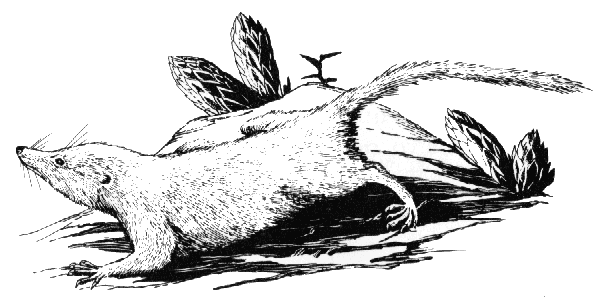[Recent Entries][Archive][Friends][User Info]
| March 29th, 2012 | |
|---|---|
| 09:12 pm [industrialterro] [Link] |
Eozostrodon Eozostrodon was one of the earliest mammals. It lived during the late Triassic and the early Jurassic, about 210 million years ago. Eozostrodon was one of the largest early mammals, measuring more than a meter long. As with most early mammals, the classification of Eozostrodon is uncertain. Like modern monotremes, this mammal laid eggs. Young were then fed with milk from their mother's mammary glands. Its teeth were typically mammalian, being differentiated into molars and premolars with triangular cusps. With its long snout, four legs, eight toes, clawed paws and a long hairy tail, Eozostrodon resembled a shrew. The Morganucodonts ("Glamorgan teeth") are an extinct group of important animals that seem to represent the earliest of mammals. These were shrew-sized, likely warm-blooded and possibly possessed mammary glands, though not organized into mammae with nipples. The morganucodonts were most likely insectivorous and nocturnal, seeking prey while avoiding predators that were usually active by day. Such a trait would be inherited by their descendants to avoid the predatory dinosaurs. They existed for a large portion of the Mesozoic era, from the late Triassic to early Cretaceous periods. Unlike Sinoconodon and the therapsids, their teeth are diphyodont (meaning that they possessed two sets of teeth as in all living mammals) and not polyphydont (meaning that the teeth are constantly replaced, as in reptiles). Furthermore, the primitive postcanine teeth found in more archaic proto-mammals have been replaced by true molars and premolars. The teeth are structured in such a way that a one-to-one occlusion and wear facets are present. The septomaxilla, a primitive feature also found in Sinoconodon, is present as well as a fully ossified orbitosphenoid. The anterior lamina is enlarged. The cranial moiety of the squamosal is a narrow bone that is superficially placed to the petrosal and parietal. Unlike its predecessors, the morganucodonts have a larger cerebral capacity and a longer cochlea. The atlas elements are unfused, there is a suture between the dens and axis. The cervical ribs are not fused to the centra. The coracoid and procoracoid, which are absent in therians, are present. The head of the humerus spherical as in mammals, but the spiral ulnar condyle is cynodont-like. In the pelvic girdle, the pubis, ilium and ischium are unfused. Scientists still debate if the morganucodonts should be classified as true mammals or classified as a clade outside of mammalia. An argument that is often used to classify them as non-mammals is the fact that they did not possess the three middle ear bones, they were equipped with a double jaw-joint instead (see above). Morganucodonts may be tagged as "prototherians."
|

